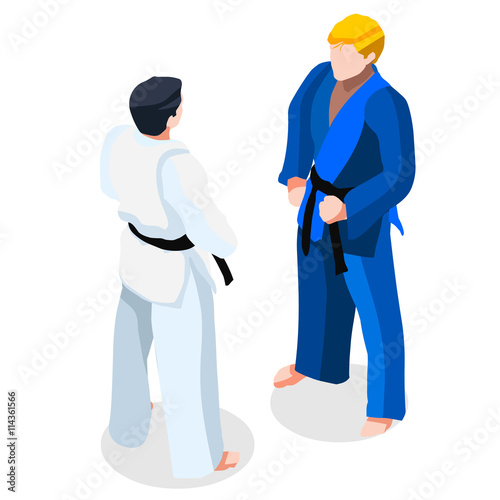Exploring The Rich Heritage And Spiritual Capacities Of Fighting Style: A Comprehensive Assessment
Exploring The Rich Heritage And Spiritual Capacities Of Fighting Style: A Comprehensive Assessment
Blog Article
Content Writer-Ryberg Henson
Enter the ancient world where martial arts were substantiated of necessity in diverse areas. Cultures crafted unique battling designs intertwined with historical contexts. Methods advanced over centuries with devoted practice and social exchanges. Today, modern-day martial arts blend traditional aspects for maximum efficiency. Philosophically, martial arts emphasize discipline, self-improvement, and harmony. Regard, humbleness, and balance are fundamental concepts assisting experts towards growth and durability. Discover https://selfdefenselawsmanvswoman88887.qodsblog.com/35483599/as-martial-arts-classes-satisfy-all-ages-uncover-just-how-they-can-improve-your-life-in-unexpected-ways-that-exceed-simply-self-defense of this abundant background and ideology to reveal the profound impacts shaping this long-lasting discipline.
Beginnings of Fighting Style
Fighting style came from numerous areas around the world, advancing as sensible battle systems to resist hazards. These old battling designs were established out of necessity, with each culture crafting strategies fit to their special environments and difficulties. From the grappling arts of Jujutsu in Japan to the striking techniques of Martial art in China, martial arts were deeply linked with the historic, social, and social material of their corresponding cultures.
In Japan, the samurai course refined martial arts like Kenjutsu, the art of the sword, which later on evolved right into the much more popularized form of Kendo. On https://www.kulr8.com/news/martial-arts-studio-teaches-free-self-defense-classes-in-response-to-concerned-citizens/article_793e7b36-2e38-11ed-8a11-572c316ddc95.html , in Brazil, Capoeira emerged as a blend of dancing and fight, produced by enslaved Africans as a means to resist oppression. Each fighting style lugs with it a rich background and philosophy, showing the values and ideas of individuals that exercised them.
As you delve into the origins of martial arts, you uncover a tapestry of human ingenuity, durability, and the unyielding spirit of warriors throughout time.
Advancement of Techniques
Through centuries of practice and refinement, combat techniques within different martial arts have undergone an extensive evolution. From ancient designs like Martial art and Karate to extra modern-day disciplines such as Brazilian Jiu-Jitsu and Krav Maga, the development of techniques has been driven by a mix of cultural impacts, practical applications, and technological innovations.
One considerable element of this development is the cross-pollination of methods between different martial arts. As an example, methods from standard Japanese Jiu-Jitsu were integrated right into the creation of Judo by Jigoro Kano in the late 19th century. This mixing of styles has resulted in the growth of crossbreed martial arts like Mixed Martial Arts (MMA), which combine elements of striking, grappling, and submission strategies.
Additionally, the advancement of strategies has been shaped by the enhancing focus on efficiency and effectiveness in battle. Experts have actually constantly sought to improve their techniques via strenuous training, testing, and competition, bring about the advancement of extremely specialized and effective battling designs. Overall, the evolution of techniques in martial arts shows the vibrant nature of fight and the continuous quest for renovation and development.
Philosophical Structures
Discovering the underlying thoughtful principles of martial arts gives understanding into their core values and guiding beliefs. At the heart of numerous martial arts disciplines is the principle of technique itself. By educating your body and mind to serve as one cohesive unit, you grow technique that extends past the dojo or fitness center right into day-to-day life. This discipline encompasses respect, humbleness, and self-discipline, shaping not just your physical capacities but also your character.
Another fundamental philosophical structure in martial arts is the concept of continuous self-improvement. The trip of understanding a fighting style is perpetual, with experts frequently making every effort to better themselves, both physically and emotionally. This focus on growth cultivates resilience, determination, and a development mindset that can be related to all elements of life.
In addition, martial arts highlight the value of harmony and equilibrium. Techniques are created to make use of an opponent's power versus them, highlighting the concept of generating and rerouting pressure rather than fulfilling it head-on. This approach extends to social connections, promoting peaceful resolutions and good understanding. By accepting these thoughtful foundations, martial musicians not only enhance their fight abilities yet additionally cultivate a way of life centered on individual development, regard, and consistency.
Final thought
To conclude, the history and approach of martial arts supply a rich tapestry of tradition, discipline, and self-improvement.
Consider example the tale of Bruce Lee, that revolutionized martial arts by mixing various designs and ideologies to create his own one-of-a-kind form of Jeet Kune Do.
Through dedication and advancement, martial musicians remain to press limits and inspire others to reach their complete capacity both in fight and in life.
